If you’re looking for the best books on the 4-7-8 breathing technique to relax and sleep better, I recommend titles that provide clear instructions, engaging visuals, and scientific backing. These books are designed for beginners of all ages, emphasizing simple exercises you can easily incorporate into daily routines. They often include step-by-step guidance and practical tips for consistency. Keep going to discover how these resources can help you master this calming breathwork and improve your sleep quality.
Key Takeaways
- The list highlights top books that teach the 4-7-8 breathing method for relaxation and better sleep.
- Selected titles feature clear instructions, engaging visuals, and beginner-friendly guidance.
- Credible books include scientific references and expert author credentials to ensure effectiveness.
- Practical exercises and routines are emphasized to help readers integrate breathwork into daily life.
- Content caters to diverse audiences, including children, teens, and adults, for accessible relaxation techniques.
Essential Pranayama: Breathing Techniques for Balance, Healing, and Peace
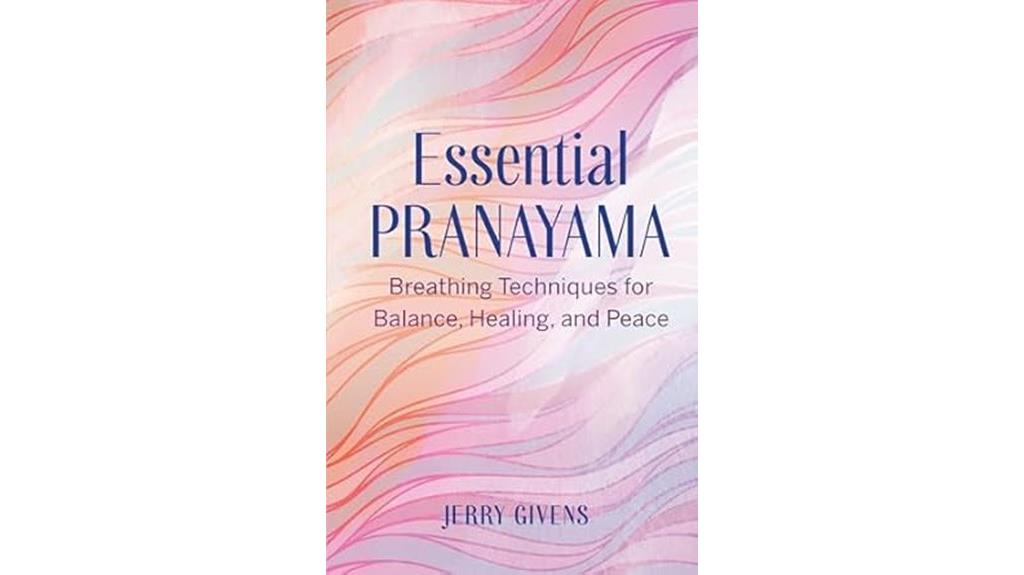
If you’re new to pranayama or looking for simple, accessible techniques to bring balance and healing into your life, then books on essential breathing methods are perfect for you. These resources emphasize straightforward practices that anyone can learn, regardless of background or experience. They teach you how to harness your breath to improve physical health, emotional stability, and spiritual well-being. By focusing on clear instructions and adaptable exercises, these books help you integrate breathwork into daily routines effortlessly. They’ve transformed my understanding of breathing, allowing me to experience greater peace, emotional clarity, and resilience through simple, mindful practice.
Best For: beginners, yoga practitioners, or anyone seeking simple, accessible breathing techniques to improve physical, emotional, and spiritual well-being.
Pros:
- Clear, straightforward instructions suitable for all experience levels
- Emphasizes simplicity and adaptability for daily practice
- Promotes emotional release, self-awareness, and holistic health
Cons:
- May lack advanced or specialized pranayama techniques for experienced practitioners
- Some users might find the focus on simplicity limits depth of practice
- Requires consistent daily effort to see significant benefits
Breathing is My Superpower: Mindfulness Book for Kids
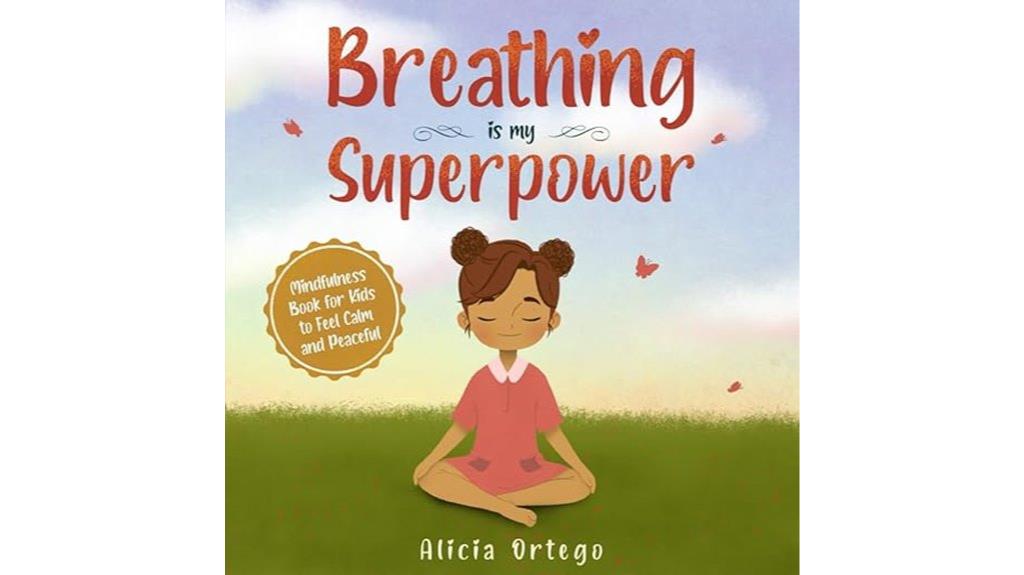
Breathing is My Superpower: Mindfulness Book for Kids stands out as an excellent choice for parents, teachers, and caregivers seeking engaging tools to teach children emotional regulation through fun, interactive breathing exercises. Featuring Sofia and her unicorn Bee, the story helps kids navigate feelings like fear and anger with relatable scenarios. The book introduces five easy breathing techniques, using visual aids like tracing shapes on fingers to promote calmness. With colorful illustrations, rhymes, and printable resources, it makes learning self-calming skills playful and accessible. This book empowers children to manage emotions independently, making it a valuable addition to home and classroom mindfulness practices.
Best For: parents, teachers, and caregivers looking for engaging, interactive tools to help children learn emotional regulation and mindfulness through fun breathing exercises.
Pros:
- Uses colorful illustrations and rhymes to make learning engaging and accessible for young children.
- Includes practical, easy-to-follow breathing exercises with visual aids that promote calmness and emotional regulation.
- Offers printable resources and flashcards for continued practice, making it versatile for home and classroom use.
Cons:
- Some users have noted occasional fuzzy printing quality, especially with text clarity.
- The book’s focus on breathing exercises may require adult guidance for optimal engagement with younger children.
- As a physical book, it may need additional materials or space for some of the interactive exercises.
Mindful Breathing: An introduction to mindful and relaxing breathing
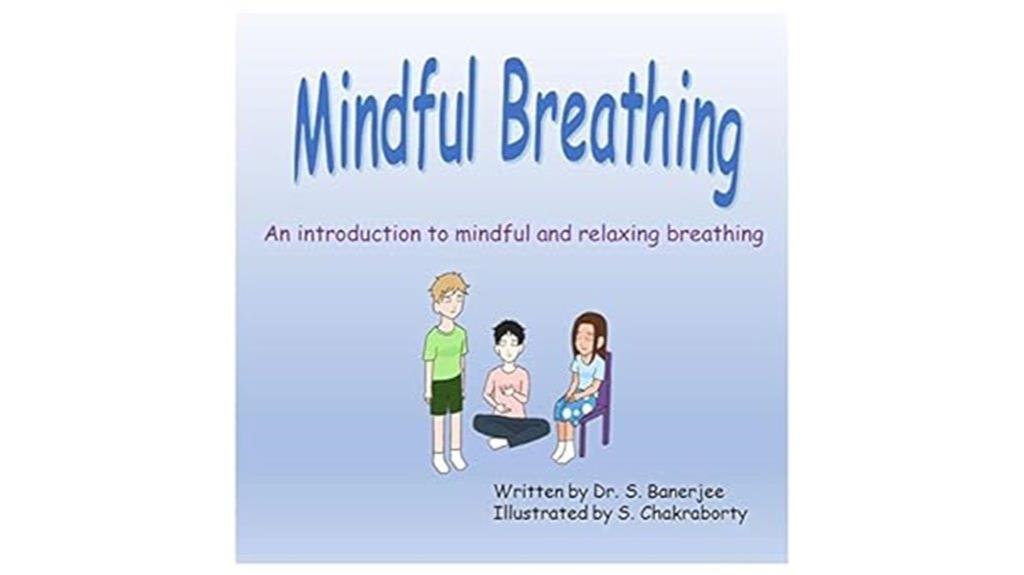
Are you looking for a simple way to introduce children to calming practices? “Mindful Breathing: An introduction to mindful and relaxing breathing” stands out as an excellent choice for parents, teachers, and caregivers aiming to teach young kids how to manage their emotions through easy-to-understand techniques. This book uses vibrant illustrations and relatable scenarios to help children recognize when they need to pause and breathe mindfully. It emphasizes that nothing is permanent and encourages awareness of feelings, helping kids stay present and calm. Practicing these techniques supports emotional regulation and creates a peaceful bedtime routine, making mindfulness accessible and enjoyable for young learners.
Best For: parents, teachers, and caregivers seeking an engaging, simple introduction to mindfulness and calming breathing techniques for young children aged 2.5 to 5 years.
Pros:
- Bright, colorful illustrations that capture children’s attention and make learning enjoyable
- Easy-to-understand language and relatable scenarios that help kids recognize when to use mindful breathing
- Supports emotional regulation and self-awareness, making it a practical tool for calming and bedtime routines
Cons:
- May require adult guidance for some children to fully grasp the concepts initially
- Limited to early childhood, so older children might find it too basic
- As a visual and introductory resource, it may need to be supplemented with additional mindfulness activities for deeper understanding
The Meditating Mantis (The Mindful Mantis Series Volume 1)
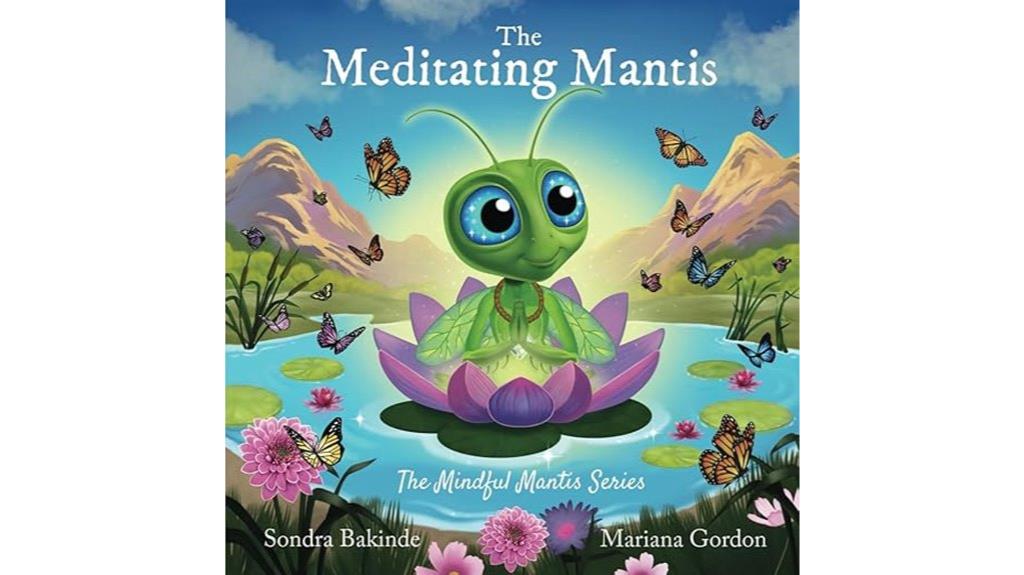
The Meditating Mantis (The Mindful Mantis Series Volume 1) stands out as an ideal choice for parents and educators seeking gentle, engaging ways to introduce mindfulness to young children. This beautifully illustrated book fosters stillness, self-awareness, and inner peace through a charming story and lovable characters. It encourages kids to slow down, practice calming techniques, and develop emotional resilience. Many children and parents find it effective as a bedtime read, helping kids feel relaxed and mindful. Its accessible approach makes complex concepts simple and enjoyable, making it a valuable addition to early childhood mindfulness education.
Best For: parents, educators, and caregivers seeking a gentle, engaging introduction to mindfulness and emotional regulation for young children.
Pros:
- Beautiful illustrations and charming storytelling that captivate children’s imagination
- Simplifies complex mindfulness concepts, making them accessible and enjoyable for young readers
- Promotes emotional resilience, calmness, and self-awareness, valuable for early childhood development
Cons:
- May require adult guidance to fully understand and practice some mindfulness techniques
- As a volume in a series, some readers might look forward to more installments for continued engagement
- The focus on mindfulness may not address all behavioral or emotional challenges children face
Breathe Like a Bear: 30 Mindful Moments for Kids
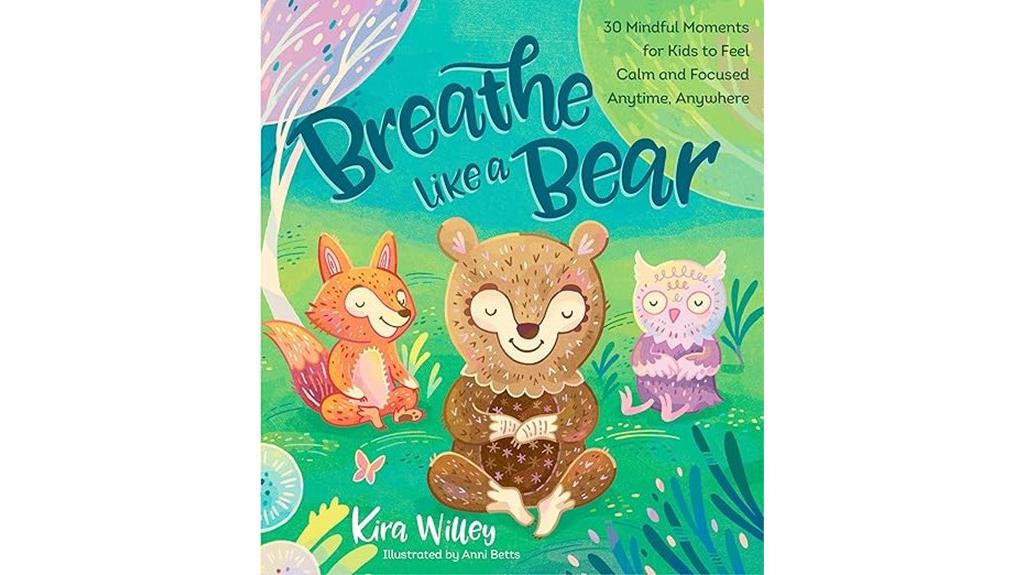
If you’re looking for a gentle, engaging way to help young children manage their emotions, Breathe Like a Bear: 30 Mindful Moments for Kids is an excellent choice. I’ve seen how its simple, colorful meditations quickly calm kids experiencing anxiety, fear, or anger. The relatable imagery—like holding a candle or enjoying hot chocolate—makes focusing easy, even when kids are highly dysregulated. With a variety of short exercises, children can choose what suits their mood, making relaxation fun and accessible. Many parents and teachers praise it as a versatile tool for bedtime, progressions, or emotional outbursts, fostering mindfulness, kindness, and emotional resilience.
Best For: parents, teachers, and caregivers seeking an engaging, easy-to-use mindfulness resource to help children manage emotions and build resilience.
Pros:
- Highly effective and quick-to-implement calming exercises suitable for various emotional states.
- Colorful, engaging illustrations and relatable imagery that capture children’s attention and make relaxation fun.
- Versatile for multiple settings, including bedtime, transitions, or during emotional outbursts, fostering emotional regulation and kindness.
Cons:
- Some children may need guidance initially to fully engage with the exercises.
- The book’s focus on mindfulness may require consistent practice to see long-term benefits.
- Limited depth for older children seeking more advanced emotional coping strategies.
Breathe Easy: Transforming Stress With Breathwork
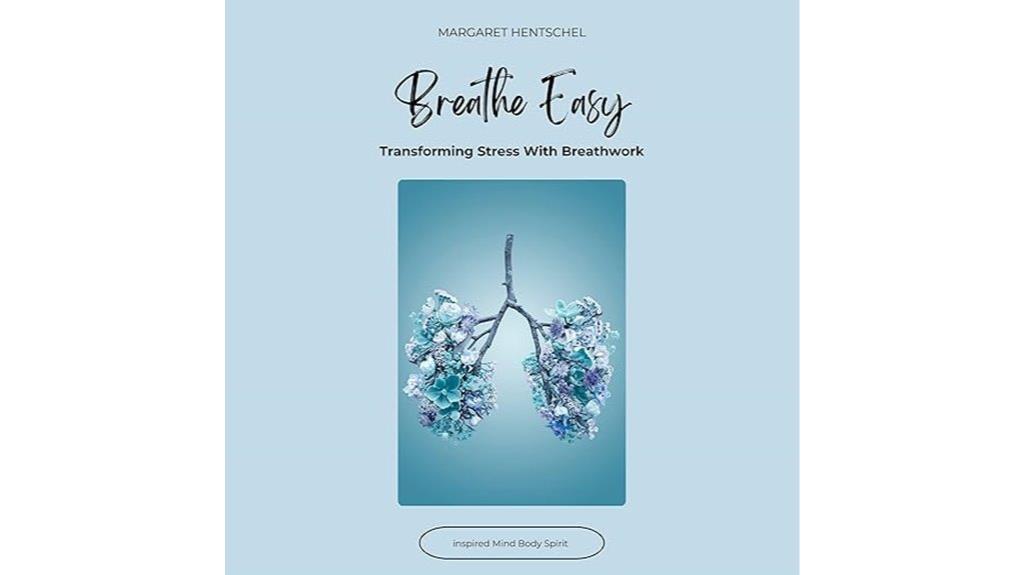
Anyone looking to reduce stress quickly and easily will find breathwork, especially the 4-7-8 technique, a powerful tool. I’ve seen how intentional breathing can clear the mind, calm the nervous system, and ease anxiety. Just a few minutes of focused breath work can make a noticeable difference, whether during a hectic day or before bed. I emphasize nose breathing because it boosts oxygen intake and improves overall health. Incorporating simple practices like visualization or mindful breathing helps me stay centered and relaxed. This approach isn’t complicated, but its impact on mental, physical, and emotional well-being is profound and immediate.
Best For: Anyone seeking a simple, effective method to reduce stress, improve mental clarity, and enhance overall well-being through accessible breathwork techniques.
Pros:
- Easy to incorporate into daily routines with minimal time required
- Scientifically grounded methods that promote relaxation, focus, and emotional resilience
- Suitable for all ages and experience levels, with guided options available
Cons:
- May require practice to master specific techniques like the 4-7-8 method
- Some individuals might find it challenging to maintain consistent practice without external reminders
- Effectiveness can vary depending on individual commitment and consistency
Breathe In, Breathe Out: Childrens Mindfulness and Breathing Techniques Book
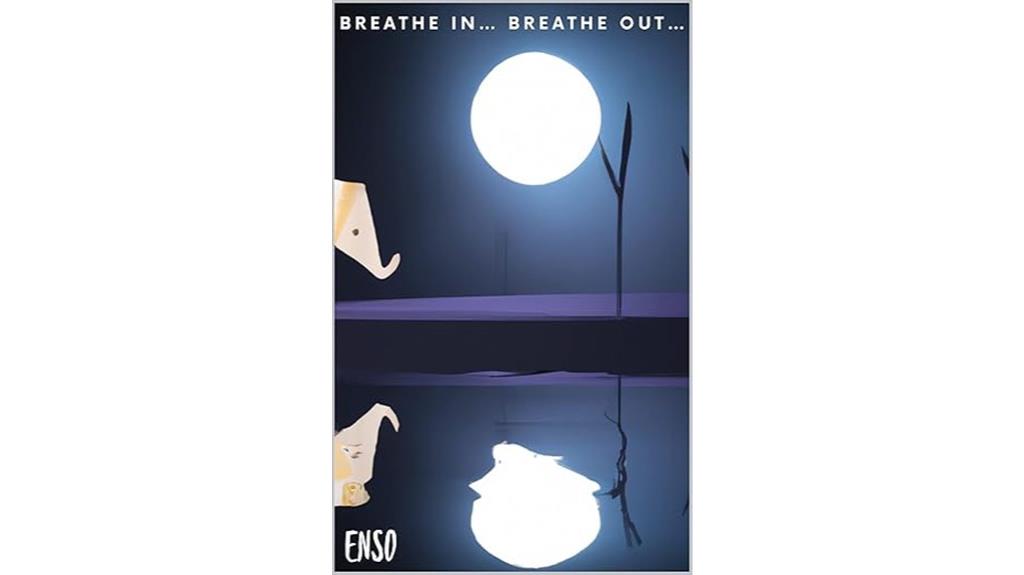
Looking for a gentle way to introduce mindfulness and breathing techniques to children? I recommend *Breathe In, Breathe Out: Children’s Mindfulness and Breathing Techniques Book*. It features simple poetry, calming illustrations, and positive messages that promote relaxation. Kids learn easy techniques like “breathe in, breathe out,” helping them manage anxiety and sleep issues. Many parents find it effective for bedtime routines and calming their children. The book’s affordability and engaging visuals make it a favorite. It’s a practical tool for teaching mindfulness, fostering focus, and encouraging emotional regulation—all in a soothing, accessible format that kids enjoy.
Best For: parents and caregivers seeking an affordable, engaging, and calming tool to help children manage anxiety, improve sleep, and develop mindfulness skills through simple breathing techniques and soothing visuals.
Pros:
- Easy-to-understand poetry and illustrations make mindfulness accessible for young children.
- Effective for bedtime routines and calming anxieties, promoting emotional regulation.
- Highly affordable and highly rated, with positive feedback from many parents.
Cons:
- May be limited in scope for children needing more advanced mindfulness practices.
- Some children might require additional guidance to fully benefit from the techniques.
- The book’s simplicity might not appeal to older children seeking more complex mindfulness exercises.
Factors to Consider When Choosing a 4‑7‑8 Breathing Technique Book

When choosing a book on the 4‑7‑8 breathing technique, I focus on clarity and practicality to make sure I can easily follow along. I also look for credible sources backed by scientific research, so I know the methods are effective. Finally, engaging visuals and suitable content for my level help me stay motivated and understand the exercises better.
Content Clarity and Simplicity
Choosing a book that clearly explains the 4-7-8 breathing technique is essential for mastering the practice effectively. Look for books that provide straightforward, step-by-step instructions that are easy to follow, especially if you’re a beginner. Simple language and clear diagrams or illustrations can make a big difference, helping you visualize the breathing pattern and practice confidently. The content should avoid overly technical jargon, making it accessible to people of all ages and experience levels. It’s also helpful when explanations highlight the purpose and benefits of each step, so you understand why you’re doing what you’re doing. A well-structured breakdown of the process into manageable parts ensures you can recall and practice the technique independently, boosting your confidence and success.
Scientific Backing and Credibility
Have you ever wondered if the 4-7-8 breathing technique is truly backed by science? When choosing a book on this method, I look for those that cite scientific studies or include references supporting its effectiveness. It’s important to select resources authored by experts in respiratory science, psychology, or mindfulness who hold credible health or medical credentials. I also prefer books that explain how the technique influences the nervous system and reduces stress, providing a clear understanding of the physiological mechanisms involved. Evidence-based practices are a must—avoiding those based solely on anecdotal claims. Additionally, endorsements from reputable health organizations or scientific publications add to a book’s credibility. These factors help ensure I’m learning from reliable, scientifically supported sources.
Practical Exercise Guidance
To effectively learn and practice the 4-7-8 breathing technique, it’s essential to find a book that offers clear, step-by-step instructions. I look for guides that break down the breathing pattern in simple terms, so I can easily follow along. Visual aids or illustrations are also helpful, especially when I’m just starting out, to reinforce the rhythm. Practical tips on how to incorporate the technique into daily routines—like during stressful moments or before bed—are invaluable. I prefer resources that emphasize consistency and include variations or extra exercises, keeping my practice engaging. Additionally, troubleshooting advice helps me refine my technique and avoid common mistakes, ensuring I get the full calming benefits from my practice.
Engagement and Visuals
When selecting a book to learn the 4-7-8 breathing technique, engaging visuals can make a big difference in how easily I grasp the method. Colorful illustrations and diagrams help clarify the inhale and exhale process, boosting my confidence in practicing correctly. Fun visuals, like blowing out candles or tracing shapes, make the technique more enjoyable and less intimidating, especially for beginners or kids. Well-designed layouts with stimulating visuals also keep my attention longer, encouraging consistent practice. Clear, simple illustrations that complement straightforward instructions make learning more accessible for both children and adults new to the method. Ultimately, visuals that are engaging and easy to understand help me stay motivated while mastering this calming breathing technique.
Accessibility and Audience Suitability
Finding the right book on the 4-7-8 breathing technique depends heavily on its accessibility and suitability for your specific needs. Look for books that use clear, simple language and visuals to make the technique easy for beginners of all ages. Check if the target audience—children, teens, adults, or beginners—is clearly stated to ensure the book matches your experience level. Books with step-by-step instructions, demonstrations, or illustrations help you understand and practice correctly. Also, consider whether the content is culturally neutral and non-religious so it feels comfortable and accessible for diverse readers. Finally, a good book offers practical tips for integrating the technique into daily routines, making it easier to develop a consistent practice anywhere you need relaxation or better sleep.
Frequently Asked Questions
Can the 4-7-8 Technique Help With Chronic Insomnia?
Yes, the 4-7-8 technique can help with chronic insomnia. I’ve found that practicing it regularly calms my mind and body, making it easier to fall asleep. It’s simple and quick to do, so I use it whenever I feel anxious or restless at night. While it may not cure all cases, I believe it’s a powerful tool to reduce stress and improve sleep quality over time.
Are There Age Restrictions for Practicing 4-7-8 Breathing?
Think of the 4-7-8 breathing as a gentle tide that can reach everyone’s shores. There are no strict age restrictions—kids, adults, seniors, all can ride this wave. I’ve found it adaptable and safe, like a universal key releasing calmness. Just listen to your body, breathe mindfully, and if you’re unsure, it’s always wise to check with a healthcare professional before starting.
How Long Should Beginners Practice the 4-7-8 Method Daily?
As a beginner, I recommend practicing the 4-7-8 breathing technique for about 4 to 8 weeks daily, starting with two to four cycles per session. I found that consistency is key, so I set aside just 5 minutes each day. Over time, I gradually increased my practice to 10 minutes, which helped me relax and sleep better. Remember, listen to your body and adjust as needed.
Does 4-7-8 Breathing Work for Anxiety or Panic Attacks?
Yes, the 4-7-8 breathing technique can be a powerful tool for anxiety and panic attacks. It calms your mind, steadies your nerves, and slows your racing heart. When I use it during anxious moments, I feel my tension melt away like snow under the sun. It’s like pressing a reset button, helping me regain control and find peace amidst chaos. Give it a try—you might find it works wonders for you too.
Can the 4-7-8 Technique Be Combined With Other Relaxation Methods?
Yes, I often combine the 4-7-8 technique with other relaxation methods like progressive muscle relaxation or mindfulness meditation. It’s surprisingly effective because it helps deepen my calmness and focus. I find that integrating different techniques creates a personalized routine that eases my anxiety and promotes better sleep. You might want to experiment with combining these methods to discover what works best for you and enhances your relaxation.
Conclusion
Finding the right book on the 4-7-8 breathing technique can feel like discovering a hidden gem. I remember struggling with sleepless nights until I tried a simple breath pattern—suddenly, my mind calmed like a peaceful lake at dawn. Just like a gentle breeze can clear storm clouds, the right guide can help you breathe easier and sleep better. Immerse yourself, explore, and let your breath lead you to tranquility.









